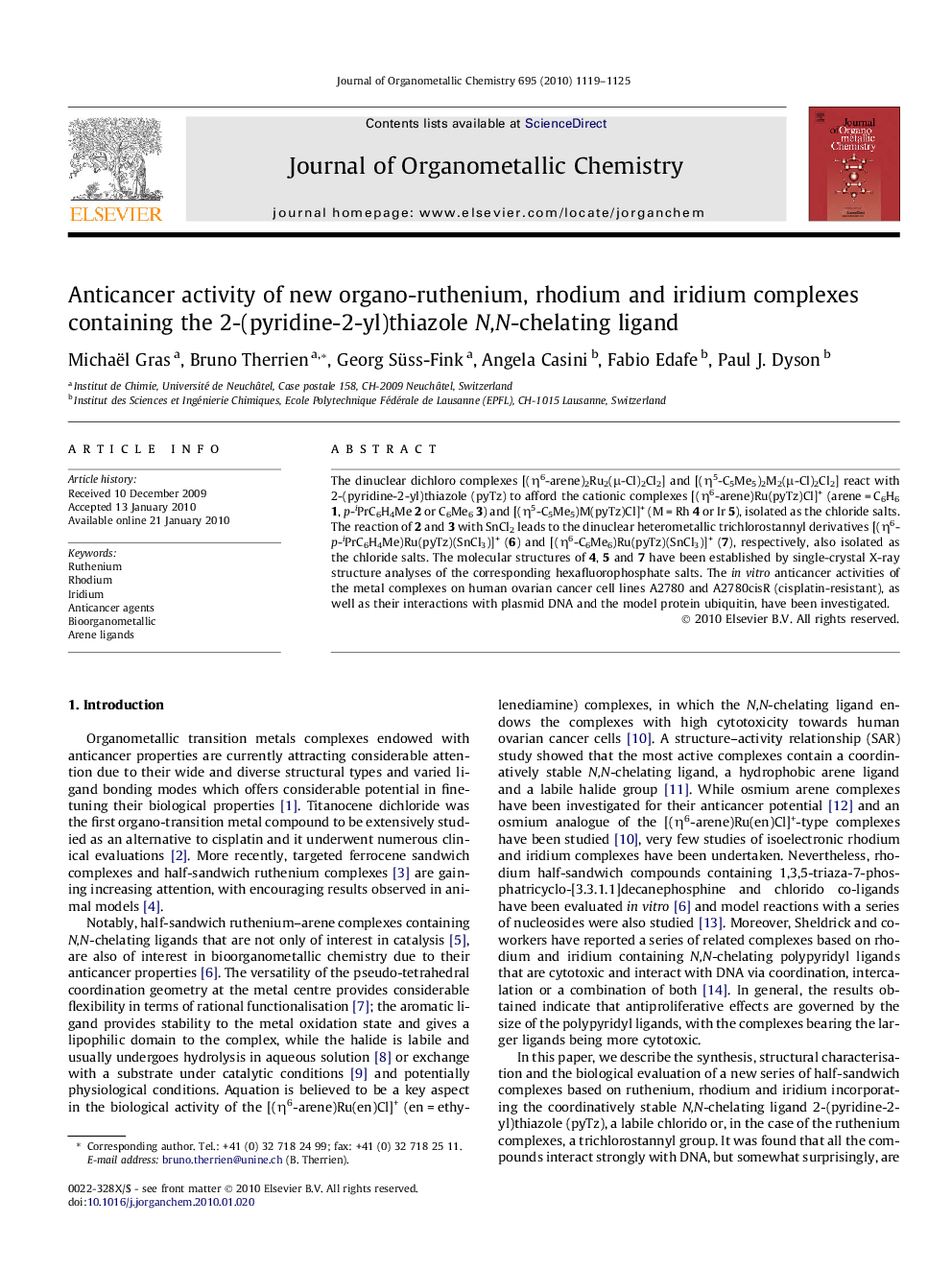| Article ID | Journal | Published Year | Pages | File Type |
|---|---|---|---|---|
| 1325070 | Journal of Organometallic Chemistry | 2010 | 7 Pages |
The dinuclear dichloro complexes [(η6-arene)2Ru2(μ-Cl)2Cl2] and [(η5-C5Me5)2M2(μ-Cl)2Cl2] react with 2-(pyridine-2-yl)thiazole (pyTz) to afford the cationic complexes [(η6-arene)Ru(pyTz)Cl]+ (arene = C6H61, p-iPrC6H4Me 2 or C6Me63) and [(η5-C5Me5)M(pyTz)Cl]+ (M = Rh 4 or Ir 5), isolated as the chloride salts. The reaction of 2 and 3 with SnCl2 leads to the dinuclear heterometallic trichlorostannyl derivatives [(η6-p-iPrC6H4Me)Ru(pyTz)(SnCl3)]+ (6) and [(η6-C6Me6)Ru(pyTz)(SnCl3)]+ (7), respectively, also isolated as the chloride salts. The molecular structures of 4, 5 and 7 have been established by single-crystal X-ray structure analyses of the corresponding hexafluorophosphate salts. The in vitro anticancer activities of the metal complexes on human ovarian cancer cell lines A2780 and A2780cisR (cisplatin-resistant), as well as their interactions with plasmid DNA and the model protein ubiquitin, have been investigated.
Graphical abstractNew half-sandwich complexes of ruthenium, rhodium and iridium containing the 2-(pyridine-2-yl)thiazole N,N-chelating ligand display, despite strong interactions with DNA, only modest cytotoxicity towards human ovarian cancer cells.Figure optionsDownload full-size imageDownload as PowerPoint slide
